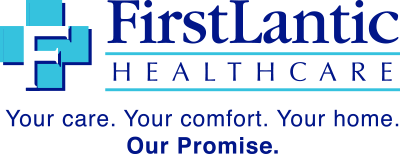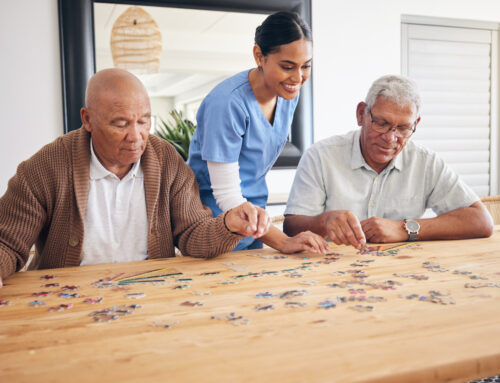Part One in a Two-Part Series
Turning on the news these days can certainly make it seem like the world is collapsing. And while the negative headlines usually get the attention, there is no doubt that there are significant social unrest issues that seem to have been exacerbated by the pandemic. But that isn’t the only difficulty older Americans are facing. In part one of this two-part series, FirstLantic Healthcare, looks at some of the challenges facing our elderly population today. In part two, we will examine some of the possible solutions.
- Shortages in Geriatric Healthcare Professionals
For the first time in our history, older adults are projected to be the largest demographic group. In 2034, there will be 77 million seniors (age 65 and over) and 76.5 million children (age 18 and younger). This will put a much more significant burden on an already overtaxed healthcare system when we are already facing shortages in geriatric physicians. By 2032, an anticipated shortage of nearly 122,000 physicians is expected. And it’s not only doctors that will be in short supply but nurses as well, especially in rural areas.
- Ageism in the Workplace
Many older Americans live a very different life than previous generations and work longer out of necessity or choice. However, extending your career can be challenging unless you have your own business. Even with worker shortages after the pandemic, older workers are having difficulty getting re-hired. The percentage of jobseekers in February above the age of 55 who were “long-term unemployed,” meaning they’d been looking for a job for 27 weeks or more, was more than 36%, compared to around 23% among those between the ages of 16 and 54. And at a time when people are living longer, the age of executives has gotten younger. In fact, the average age of corporate executives was fifty-nine years old in 1980, and now in 2022, it is 48. For many of us, work offers a sense of purpose, and helping older adults stay meaningfully engaged is critical for their health and the health of our communities.
- Mental Health
According to the most recent U.S. Census, 28% of people aged 65 and older lived alone, with numbers estimated to be much higher now. Social isolation can lead to depression and anxiety. Twenty percent of people over 55 now have a mental disorder, and two-thirds of nursing home residents exhibit mental and behavioral problems. Older Americans underutilize mental health services, with less than 3 percent of older adults seeing a mental health professional for their problems. Some barriers to seeking treatment include cost, lack of coordination among service providers, stigma, and a shortage of Geropsychologists. Out of 32,183 full-time doctoral students, 140 or 0.4 percent are in programs specializing in aging.
- Assistance at Home
88% of surveyed older adults felt it is essential to stay in their own home for as long as possible, but many are not prepared. Either their homes do not have adequate accessibility features, or they do not have the appropriate support. One-third of people over 65 need assistance with at least one activity of daily living. And those who live alone were more likely to say that they do not have someone to help with personal care than those who live with someone (48% vs. 27%). In addition, many seniors were unaware of places or organizations in their community that offers them the opportunity to socialize, exercise, or participate in activities.
- Care Coordination
Our health care system is incredibly fragmented and complex, and care is not often coordinated effectively among physicians. With two-thirds of older adults having at least two chronic conditions, the lack of a holistic approach to their medical care can lead to catastrophic results. Today, over 40% of adults age 65 and older take five or more prescription medications regularly, triple the rate two decades ago. As many as 9 million older people are on ten or more meds, and it’s not unusual for patients to take as many as 20 to 25 different medications daily. The result is increased rates of hospitalization for adverse drug events. In 2018, more than 280,000 people over age 65 were hospitalized for an adverse drug event, and another 5 million sought care at a doctor’s office or emergency department. Over the past 30 years, specialization in U.S. medicine has increased significantly, encouraged by higher pay for specialty providers, especially surgeons. Specialization has benefits but drawbacks as well. Since patients no longer see one dominant provider for their healthcare needs, the system is more inefficient, with patients paying for a higher volume of visits and experiencing a higher likelihood of miscommunication between providers. Elderly individuals who are severely ill and cannot act as their own advocate or don’t have a friend or family member to coordinate their care can increase the risk of mismanaged care.
Summary
Mae West famously said, “Getting older is not for the faint of heart .”Although every generation faces challenges, the elderly demographic can find it particularly challenging. However, the picture is not all doom and gloom. In our next blog, FirstLantic will identify solutions that could help older people live longer, happier, and healthier lives.
For more information about FirstLantic Home Healthcare, click here.
To read more FirsLantic blogs, click here.
 AVAILABLE 24 HOURS A DAY/7 DAYS A WEEK
AVAILABLE 24 HOURS A DAY/7 DAYS A WEEK Careers
Careers







